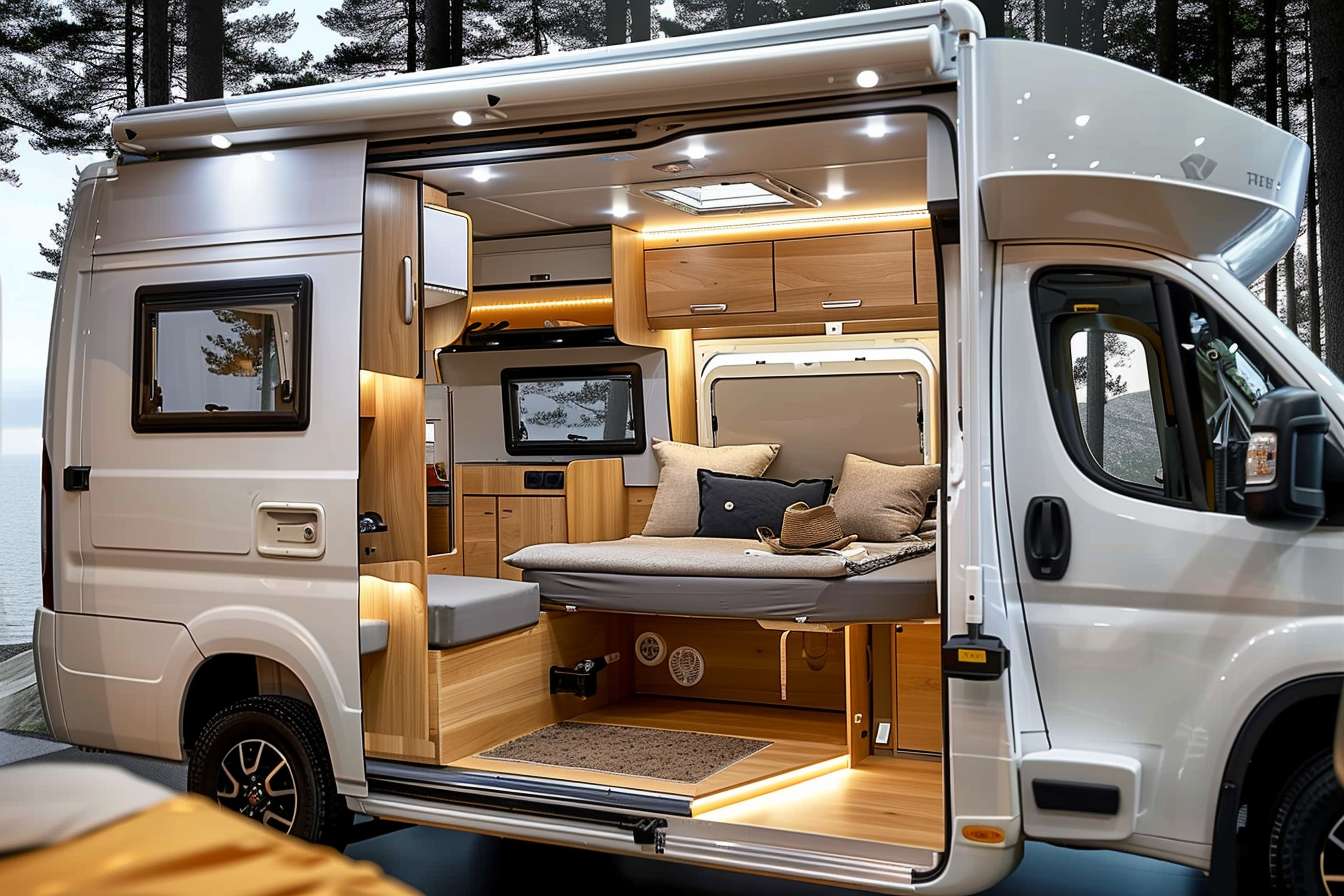Used RV Guide: The Economical Choice for Road Trips in 2025
Traveling the open road in a recreational vehicle offers freedom, flexibility, and adventure without the hefty price tag of buying new. For budget-conscious travelers and families seeking memorable experiences, purchasing a used RV, camper, or motorhome presents a practical solution that combines affordability with functionality. This guide explores the benefits of choosing pre-owned recreational vehicles, strategies for finding quality options at reasonable prices, and what to consider when making your purchase decision in today's market.

The recreational vehicle market has evolved significantly, offering diverse options for those who dream of exploring highways and scenic routes across the country. While new models come with premium features and warranties, the used RV market provides access to quality vehicles at substantially lower costs, making road trip adventures accessible to more people.
Why Choose a Used Motorhome?
Opting for a pre-owned motorhome delivers several practical advantages beyond initial cost savings. The most significant benefit is avoiding steep depreciation that occurs during the first few years of ownership. New RVs typically lose 20 to 30 percent of their value within the first year alone, meaning buyers of used units benefit from previous owners absorbing this financial hit.
Used motorhomes also allow buyers to access higher-end models and features that might be unaffordable when purchased new. A three-year-old luxury model often costs the same as or less than a brand-new basic unit, providing better amenities, build quality, and living space. Additionally, many used RVs come with upgrades and accessories already installed by previous owners, such as solar panels, upgraded appliances, or enhanced entertainment systems, adding value without additional investment.
The variety available in the used market exceeds what dealerships stock in new inventory. Buyers can find discontinued models with specific floor plans or features no longer manufactured, giving more options to match personal preferences and travel styles. Insurance and registration costs typically run lower for used vehicles as well, contributing to overall affordability throughout ownership.
Find Cheap Used Motorhomes
Locating quality used motorhomes at competitive prices requires strategic searching across multiple channels. Online marketplaces have become primary resources, with platforms like RV Trader, Craigslist, and Facebook Marketplace hosting thousands of listings nationwide. These sites allow filtering by price range, location, type, and features, making it easier to identify suitable options quickly.
Specialized RV dealerships maintain used inventory alongside new models, often providing certified pre-owned programs with limited warranties and inspection reports. While dealership prices may run slightly higher than private sales, the added security and financing options appeal to many buyers. Auction sites and liquidation sales occasionally feature repossessed or estate-sale RVs at below-market prices, though these require thorough inspection before purchase.
Timing purchases strategically can yield better deals. Late fall and winter months see reduced demand as camping season ends, prompting sellers to lower prices. End-of-model-year sales at dealerships also create opportunities as they clear inventory for incoming stock. Networking within RV communities and clubs sometimes reveals off-market opportunities from members looking to upgrade or downsize.
Being flexible with brand preferences and minor cosmetic issues expands options considerably. Focusing on mechanical condition and structural integrity rather than perfect aesthetics allows buyers to negotiate better prices on units needing only superficial improvements that can be addressed gradually.
Affordable Used RVs for Sale
Understanding the pricing landscape helps set realistic expectations and identify genuine value. The used RV market spans a wide range depending on age, condition, type, and features. Class C motorhomes from the early 2010s typically range between $30,000 and $60,000, while older Class A models might start around $40,000 for well-maintained units. Smaller travel trailers and pop-up campers offer entry points as low as $5,000 to $15,000 for models from the past decade.
Prices, rates, or cost estimates mentioned in this article are based on the latest available information but may change over time. Independent research is advised before making financial decisions.
| RV Type | Price Range | Typical Features |
|---|---|---|
| Class A Motorhome (2010-2015) | $40,000 - $80,000 | Full amenities, spacious interiors, powerful engines |
| Class C Motorhome (2012-2017) | $35,000 - $65,000 | Overhead cab sleeping, mid-size convenience |
| Class B Camper Van (2010-2016) | $45,000 - $75,000 | Compact design, fuel efficiency, easier parking |
| Travel Trailer (2010-2018) | $8,000 - $25,000 | Towable, variety of sizes, lower maintenance |
| Fifth Wheel (2010-2015) | $20,000 - $50,000 | Spacious living, requires truck for towing |
| Pop-Up Camper (2008-2018) | $4,000 - $12,000 | Lightweight, easy storage, budget-friendly |
When evaluating affordable options, prioritize mechanical soundness over cosmetic perfection. Engine condition, transmission functionality, and chassis integrity matter more than interior decor or minor exterior blemishes. Request maintenance records and consider professional inspections before finalizing purchases, as repair costs can quickly eliminate initial savings if major issues exist.
Financing options exist for used RVs through credit unions, specialized RV lenders, and some banks, though interest rates and terms vary based on vehicle age and buyer creditworthiness. Older units may require larger down payments or shorter loan terms compared to newer models.
Essential Considerations Before Buying
Successful used RV purchases require careful evaluation beyond just price comparison. Inspect all systems thoroughly, including plumbing, electrical, heating, and cooling components. Water damage represents one of the most serious and expensive issues in used RVs, so examine ceilings, floors, and walls for soft spots, staining, or musty odors indicating leaks.
Tire age and condition matter significantly, as RV tires deteriorate over time even with minimal use. Check manufacturing dates on sidewalls and budget for replacement if tires exceed six years old. Roof condition deserves close attention, as resealing or replacement can cost thousands of dollars if neglected.
Understanding your intended use helps determine appropriate size and features. Weekend warriors may find smaller, more maneuverable units sufficient, while full-time travelers need more robust construction and amenities. Storage availability at home influences size decisions, as does towing capacity if considering trailers.
Making Your Purchase Decision
Choosing a used RV combines financial planning with lifestyle considerations. Establishing a realistic budget that includes not just purchase price but also insurance, maintenance, storage, and fuel costs prevents financial strain. Researching specific models for common issues and reliability ratings through owner forums and reviews provides valuable insights beyond seller descriptions.
Test driving motorized units or conducting thorough walk-throughs of towable models helps assess livability and functionality. Spending time inside the RV simulating daily activities reveals whether layouts and features meet practical needs. Negotiating prices becomes easier when armed with research on comparable units and knowledge of any needed repairs or updates.
Purchasing a used recreational vehicle opens possibilities for affordable adventure and memorable travel experiences. With careful research, thorough inspections, and realistic budgeting, buyers can find quality pre-owned RVs that provide years of reliable service and countless miles of exploration across diverse landscapes and destinations.




